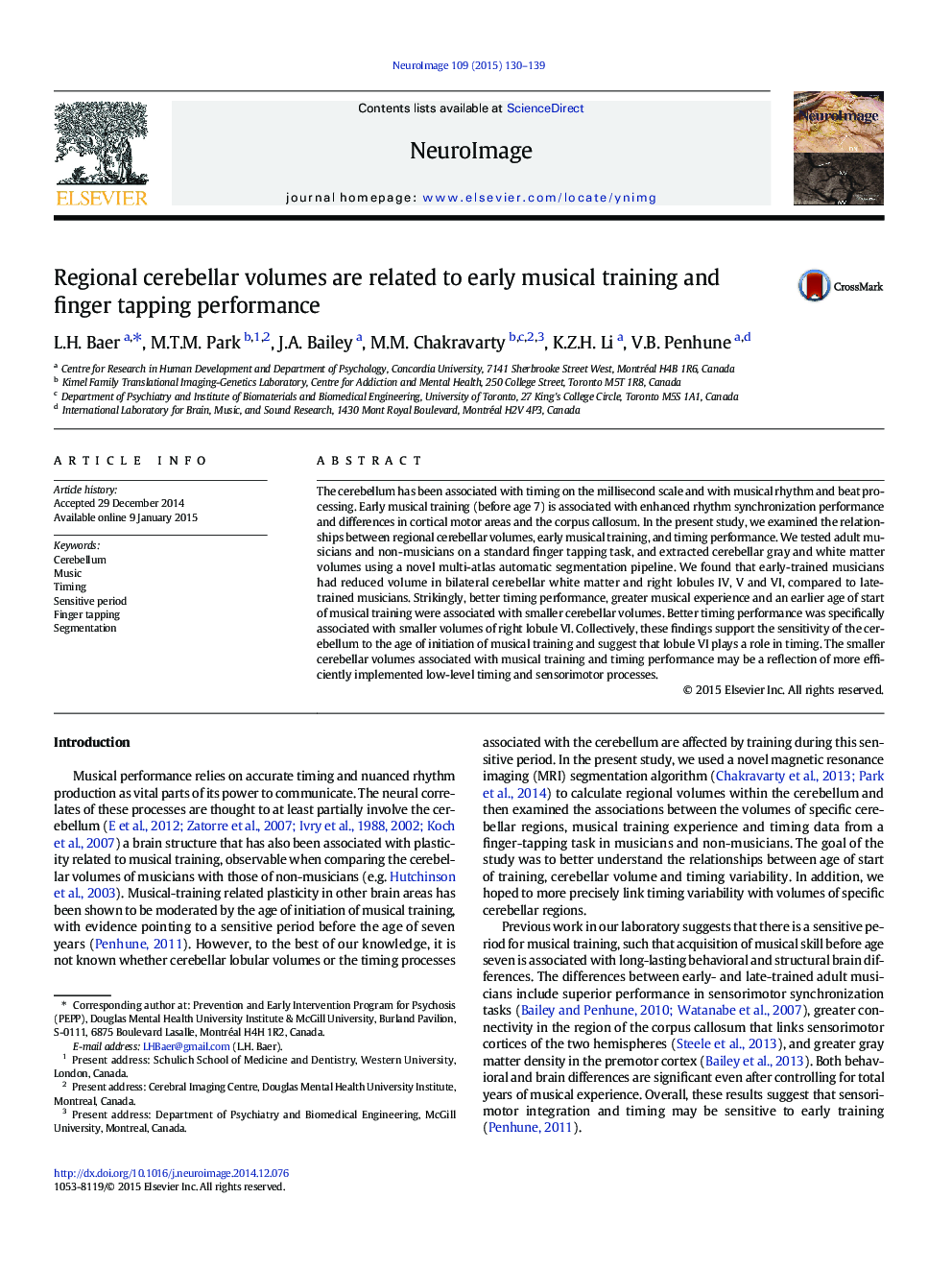| Article ID | Journal | Published Year | Pages | File Type |
|---|---|---|---|---|
| 6025591 | NeuroImage | 2015 | 10 Pages |
Abstract
The cerebellum has been associated with timing on the millisecond scale and with musical rhythm and beat processing. Early musical training (before age 7) is associated with enhanced rhythm synchronization performance and differences in cortical motor areas and the corpus callosum. In the present study, we examined the relationships between regional cerebellar volumes, early musical training, and timing performance. We tested adult musicians and non-musicians on a standard finger tapping task, and extracted cerebellar gray and white matter volumes using a novel multi-atlas automatic segmentation pipeline. We found that early-trained musicians had reduced volume in bilateral cerebellar white matter and right lobules IV, V and VI, compared to late-trained musicians. Strikingly, better timing performance, greater musical experience and an earlier age of start of musical training were associated with smaller cerebellar volumes. Better timing performance was specifically associated with smaller volumes of right lobule VI. Collectively, these findings support the sensitivity of the cerebellum to the age of initiation of musical training and suggest that lobule VI plays a role in timing. The smaller cerebellar volumes associated with musical training and timing performance may be a reflection of more efficiently implemented low-level timing and sensorimotor processes.
Related Topics
Life Sciences
Neuroscience
Cognitive Neuroscience
Authors
L.H. Baer, M.T.M. Park, J.A. Bailey, M.M. Chakravarty, K.Z.H. Li, V.B. Penhune,
